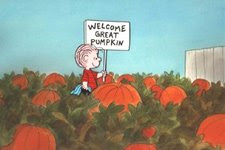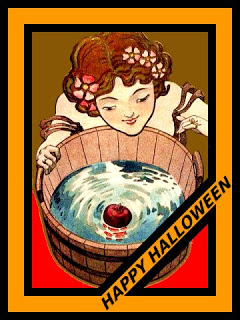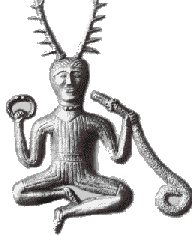Booooo….. and thank you, please!
A couple of years ago I got really grumpy about Halloween.
For years I’d lived in places where Halloween wasn’t observed, and I rather missed the good old days when I’d get upwards of a hundred wee ghouls and princesses and ghosts and hobos at my door. Now, back in North America, living in the sort of neighborhood that’s good for trick-or-treating – not much traffic, friendly people, and, it can’t be denied, a certain affluence, I was looking forward to the evening.

But something had changed. First, there wasn’t a dribble of kids over a couple of hours. It seems neighborhood Halloween parties are the order of the day now, and when the party’s over, the crowd of perhaps 20 or 30 kids all descend at the same time. So the doorbell rand and there huddled a mass of little monsters. (Well, you know what I mean.) Three — a Snow White, a little pop starlet and a large rodent of some sort — ran into the house and disappeared down the hall. Their brother called after then, saying “Hey, what do you think this is, a house tour?” My thoughts precisely. I decided to leave them to it, since closing the door on a mob of preteens seemed rude and leaving them unattended seemed imprudent. I assumed the home-invaders would return, possibly with treats they’ve picked out themselves. I turned to the crowd and proffered my bowl of treats. It disappeared as if a giant vacuum cleaner had been applied. I ripped open another few bags and they barely hit the bowl before they, too, were hoovered up. The brother of the traveling three asked me if he should go find his siblings. I thought that might be a good idea and so I sent the cheese, as it were, after the cheese.

Now, it’s not like there were all that many kids. Certainly not the hundred-plus I used to greet. But these kids are all of a mass, and frankly, weren’t behaving like I remember trick-or-treaters behaving. No cute banter. No, “so, what are you, Madonna or Brittany?” Just a great grab and run. A few, yes, muttered thank yous, but not many, and in fact few of them even looked at me. I was merely a candy source, like a broken vending machine.
One small girl put her basket down and reached, double-fisted, into the bowl, filling her pockets and her basket to overflowing. I pulled away.
“I think you’ve had enough,” I said.
“I want some of those,” she said, pointing to a bag of peanut-butter cups.
“You’ve had a lot already,” I said.
“You didn’t give me any of those,” she said.
Her mother stood behind her, staring blankly.
“Nope. I didn’t,” I said. “Why don’t you let the others have a turn?”
The child glared at me before backing off. She was, possibly, seven.
Behind me, the troop of miniature home invaders had been rounded up by their exhausted-looking brother. They didn’t seem to be carrying any of cutlery or lamps or anything. “Sorry,” the older boy said and herded them out into the street.
And so I spent the next fifteen or so minutes.
The next year I closed the drapes and turned off the lights and pretended I wasn’t home. Last year, feeling guilty and concerned that I might get a reputation as “That Lady” — you know, the one who yells at all the kids, never returns an ill-aimed baseball, and whose house gets egged first — I tried again. Perhaps my reputation as the grumpy mean lady had made it’s way around the neighborhood, and the kids had been forewarned, but the behavior was noticeably better. More thank you’s than not. A few smiles.
Tonight I’ll try it again.
But really, I can’t help thinking, aren’t we all missing something? This night marks the turn of the seasons, it has a rich spiritual history and reminds us that we are connected to the earth and to our pasts.
The Celts, celebrated the new year on November 1. This day marked the end of summer and the harvest and the beginning of the dark, cold winter, a time of year that was often associated with death since food was often scare and war and sickness weren’t. And so All Hallow’s Eve is the festival of the dying year.
Great bonfires were lit in the villages at Samhain. In Scotland, as the sun began to set, young men carried blazing torches around the boundaries of their farms to protect the family from malevolent forces. As the sun’s rays vanished, the hearth fire, which was never ordinarily allowed to go out, was extinguished, and the home was cast into the dark and cold. The hearth was swept, symbolically sweeping away anything old and unclean. And then, new fire, fresh and hopeful and sacred, kindled from the great communal blaze, was brought into each house to renew the hearth and home.
In parts of western Brittany, Wikipedia tells me, Samhain is still heralded by the baking of kornigou, cakes baked in the shape of antlers to commemorate the god of winter shedding his’cuckold’ horns as he returns to his kingdom in the Otherworld.
Life in those long ago days was hard, and precarious, particularly during the cold dark months. But unlike more modern people who often relegate the sacred to one day of the week, the ancient people felt little separation between the sacred a
nd the secular. In other words, everything was holy, and the gods and spirits were close at hand. No need to go to church — the church was in the air you breathed, the earth you walked on, the trees you walked among, the water you waded in, the sky you gazed into. You lived in full awareness of it all – and knew when it was right and good to give honor and respect and gratitude to the Ineffable, the Holy.
By the 800s, the influence of Christianity had spread into Celtic lands, and things were beginning to transform. According to The History Channel – “In the seventh century, Pope Boniface IV designated November 1 All Saints’ Day, a time to honor saints and martyrs. It is widely believed today that the pope was attempting to replace the Celtic festival of the dead with a related, but church-sanctioned holiday. The celebration was also called All-hallows or All-hallowmas (from Middle English Alholowmesse meaning All Saints’ Day) and the night before it, the night of Samhain, began to be called All-hallows Eve and, eventually, Halloween. Even later, in A.D. 1000, the church would make November 2 All Souls’ Day, a day to honor the dead. It was celebrated similarly to Samhain, with big bonfires, parades, and dressing up in costumes as saints, angels, and devils. Together, the three celebrations, the eve of All Saints’, All Saints’, and All Souls’, were called Hallowmas.”
Trick-or-treating resembles the late medieval practice of “souling,” when poor folk would go door to door on Hallowmas (November 1), receiving food in return for prayers for the dead on All Souls Day (November 2). It originated in Ireland and Britain, although similar practices for the souls of the dead were found as far south as Italy. Shakespeare mentions the practice in his comedy The Two Gentlemen of Verona (1593), when Speed accuses his master of “puling [whimpering, whining], like a beggar at Hallowmas.”
But what about the rituals transformed in modern day, but which have their roots in the distant past. Remember the belief that the visiting dead could tell the future? Well, according to The History Channel, again, by more modern times Halloween was still a time of prophesy, but of a more domestic nature:
“In 18th-century Ireland, a matchmaking cook might bury a ring in her mashed potatoes on Halloween night, hoping to bring true love to the diner who found it. In Scotland, fortune-tellers recommended that an eligible young woman name a hazelnut for each of her suitors and then toss the nuts into the fireplace. The nut that burned to ashes rather than popping or exploding, the story went, represented the girl’s future husband. (In some versions of this legend, confusingly, the opposite was true: The nut that burned away symbolized a love that would not last.) Another tale had it that if a young woman ate a sugary concoction made out of walnuts, hazelnuts and nutmeg before bed on Halloween night, she would dream about her future husband. Young women tossed apple-peels over their shoulders, hoping that the peels would fall on the floor in the shape of their future husbands’ initials; tried to learn about their futures by peering at egg yolks floating in a bowl of water; and stood in front of mirrors in darkened rooms, holding candles and looking over their shoulders for their husbands’ faces.”
Other rituals were more competitive. At some Halloween parties, the first guest to find a burr on a chestnut-hunt would be the first to marry; at others, the first successful apple-bobber would be the first down the aisle.
So, it seems there is much about this time of year to consider, other than a greedy grab for sweet treats. Perhaps we in North America have replaced the time of gratitude and honor to the autumnal forces with Thanksgiving, to arrive in a few weeks. But even if that is true, might we not, on the hallowed eve, when the nights are longer and longer, the air more chill, and most of us are grateful for stores of food in the cupboard and heat to warm us, give some small consideration to the past, to the dead, to the shift of sacred seasons?
Might we not teach our children, in the midst of revelry, to say thank you?
(postscript — Nov. 1 — I am sorry to say that the troop of kids at my door last night was, largely, discouraging. So much so that my Best Beloved, who is, unlike me, the gentlest and least judgmental of human beings, looked up from one particularly unpleasant moment and said, “Hmmm. I see what you mean.” The look of disappointment on his face was a shard of glass in my heart.
But really, what do you do with children who grab, push other kids aside, tell you they don’t like what’s on offer, demand more, and of course — “forget” to say thank you?
Okay, it wasn’t all bad — a few kids (whom I won’t single out because I don’t want to hurt the others), were adorably polite without being reminded. And yes, remind them I did. I asked several children if they had forgotten how to say thank you and told another that yes, she might be given a THIRD chocolate bar if she didn’t grab and if she used the “P” word. I also suggested to a boy that shouldering a five year old might not be the best way to get what he wanted. He seemed unimpressed with the suggestion.
My gosh, how the polite kids stood out! Hooray to parents to teach their children manners. When will people learn that teaching their children to be considerate of others and polite is doing them a favor? Learning courtesy and thoughtfulness is preparation for life in society? When will kids learn that they’re more likely to get an extra treat if they ask nicely and don’t elbow the smaller child next to them in the head? Seems simple enough to me.
Next year? Well, we’ll see, but don’t be surprised if the lights are out. The problem is, I don’t want to disappoint those wonderful, adorable kids who smiled, said please and thank you, and that one little girl who actually put a candy bar in her friends plastic pumpkin!)
Copyright 2008 Lauren B. Davis For permissions: laurenbdavis.iCopyright.com

